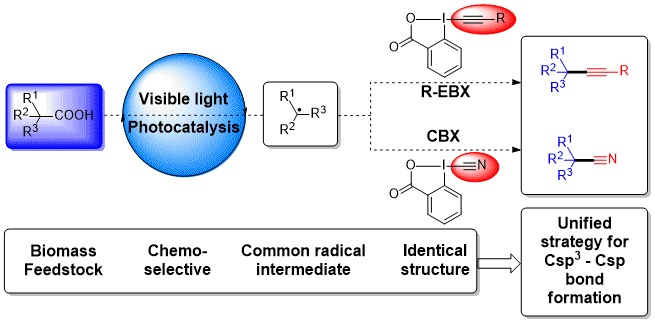Decarboxylative Alkynylation and Cyanation using Photoredox Catalysis and Hypervalent Iodine Reagents
Aliphatic alkynes and nitriles are functional groups of great significance, naturally occurring and broadly used as versatile building blocks in organic synthesis. They find applications from material to medicinal and pharmaceutical sciences. A unified strategy to access both classes of compounds under eco-friendly conditions is, therefore, highly desirable. Herein, we describe the straightforward decarboxylative alkynylation[1] and cyanation[2] of broadly available carboxylic acids using photoredox catalysis and cyclic hypervalent iodine reagents. In both reactions, the simplest benziodoxolone reagent was the most successful. Functional groups tolerance is high and reactions can be scaled up to generate useful intermediates in drug synthesis. According to computational and experimental studies, two different mechanisms can be proposed, based on the oxidation potential of the reagents: via radical intermediates for alkynylation, and carbocation intermediates for cyanation.

[1] Franck Le Vaillant, Thibaut Courant, Jérôme Waser, Angew. Chem. Int. Ed. 2015, 54, 11200
[2] a) Franck Le Vaillant, Matthew Wodrich, Jérôme Waser, Chem. Sci. 2017, 8, 1790; b) F. Le Vaillant, J. Waser, Chimia 2017, 71, 4, 226.